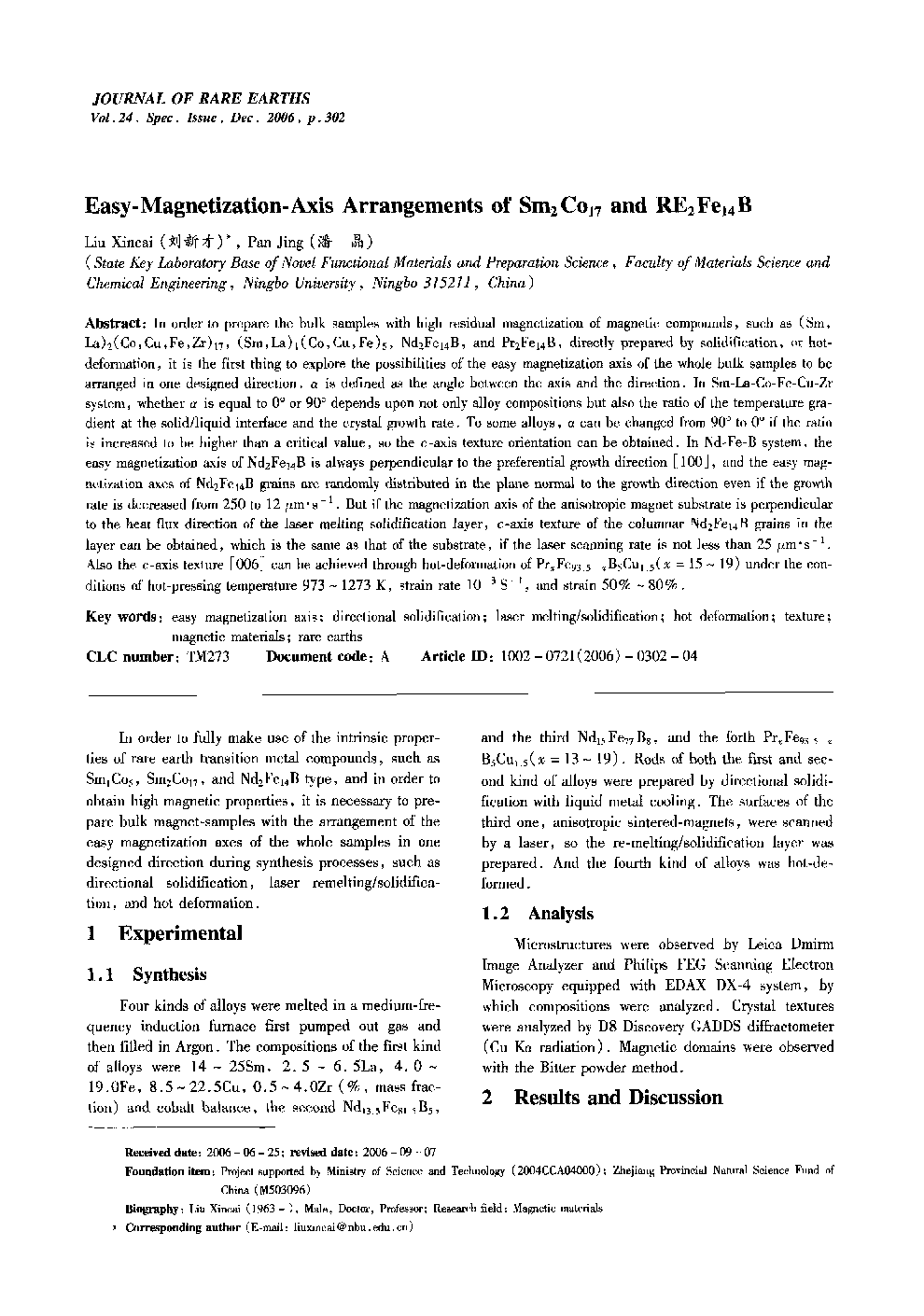| Article ID | Journal | Published Year | Pages | File Type |
|---|---|---|---|---|
| 1260838 | Journal of Rare Earths | 2006 | 4 Pages |
In order to prepare the bulk samples with high residual magnetization of magnetic compounds, such as (Sm, La)2(Co, Cu, Fe, Zr)17, (Sm, La)1 (Co, Cu, Fe)5, Nd2Fe14B, and Pr2Fe14B, directly prepared by solidification, or hot-deformation, it is the first thing to explore the possibilities of the easy magnetization axis of the whole bulk samples to be arranged in one designed direction. α is defined as the angle between the axis and the direction. In Sm-La-Co-Fe-Cu-Zr system, whether α is equal to 0° or 90° depends upon not only alloy compositions but also the ratio of the temperature gradient at the solid/liquid interface and the crystal growth rate. To some alloys, α can be changed from 90° to 0° if the ratio is increased to be higher than a critical value, so the c-axis texture orientation can be obtained. In Nd-Fe-B system, the easy magnetization axis of Nd2Fe14B is always perpendicular to the preferential growth direction [100], and the easy magnetization axes of Nd2Fe14B grains are randomly distributed in the plane normal to the growth direction even if the growth rate is decreased from 250 to 12 μm·s−1. But if the magnetization axis of the anisotropic magnet substrate is perpendicular to the heat flux direction of the laser melting solidification layer, c-axis texture of the columnar Nd2Fe14B grains in the layer can be obtained, which is the same as that of the substrate, if the laser scanning rate is not less than 25 μm·s−1. Also the c-axis texture [006] can be achieved through hot-deformation of PrxFe93.5-xB5Cu1.5(x = 15 ∼ 19) under the conditions of hot-pressing temperature 973 ∼ 1273 K, strain rate 10−3 S−1, and strain 50% ∼ 80%.
